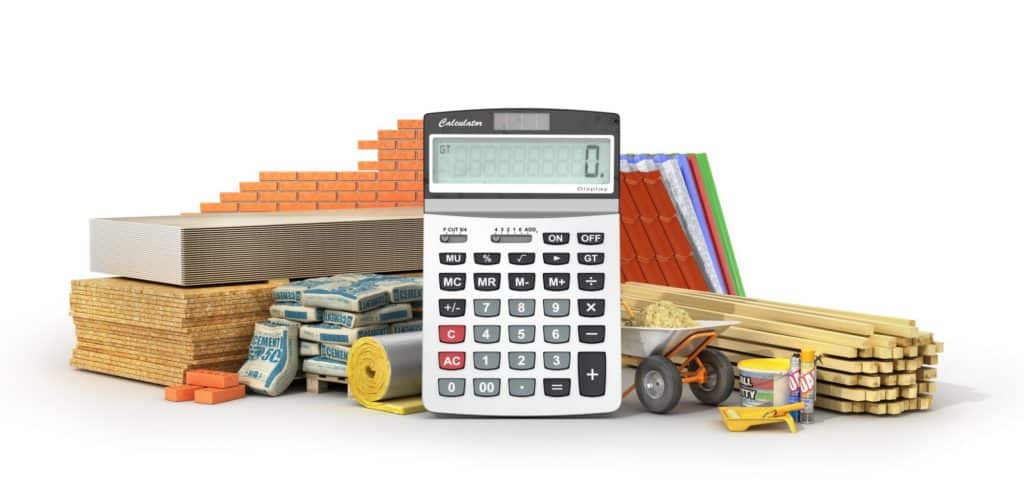According to a study from KPMG, just 31% of all projects came within 10% of the budget in the past 3 years. Tracking and understanding costs is a key area in any business. In construction, with so many moving parts it is even more important. Here we will briefly outline 8 areas to consider.
Niall Brennan from LiveCosts.com shares his view on 8 areas to consider when trying to track your costs.
What is Construction Cost Control?
Cost control is the process of collecting actual costs and collating them in a format to allow comparison with project budgets.
Start with an Accurate Budget
Fail to plan, plan to fail. How many projects go ahead with an over optimistic estimate. How much scrutiny is the estimate put under before it is tendered?
Is there any evidence based on previous projects that it can be achieved with profitability? Understanding your own prices is the key to a successful estimate. Just releasing an estimate based on industry standards does not make profitability a guarantee.
Time spent at this point is well worth upfront efforts. It is made easier and even more accurate if you can leverage information from historical projects to feed estimates. Not all projects are made equal and there are details in each that need to be considered, tweaked and accounted for, but overall knowing that you completed a similar phase previously will give you clues to the estimates accuracy.
Break the Project into Parts
Given an estimate is generally broken into phases or bodies of work, it makes sense to track in this fashion. This gives us the ability to build up performance data for these bodies of work. This data can then assist in validating the next estimates accuracy. It also helps to locate weak points in your service. Maybe groundworks are an area of a build where you constantly lose. That’s ok as long as it is realised and fixed. It can be useful to break the phases into cost types Labour / Material etc etc.. to further track the issue. If you constantly overspend on labour on groundworks maybe you could contract out next time or raise the estimation.
Manage Track & Document Project Changes
Changes happen on projects. It’s inevitable. How you manage and document project changes will have a key impact on your profitability. Here’s one reason why: you can easily be held responsible to pick up extra project costs if you can’t produce the necessary documentation that proves out a change request. Don’t let that happen. It’s essential to have a formal way to track, measure and report on change– in addition to documenting its impact on scope and cost.
Getting into any sort of dispute with a subcontractor or an owner is not a good place to be; and disputes are almost always a direct result of either side not being able to produce an appropriate amount of documentation or audit trail. So track and document everything!
Track Staff Time
In most companies, your team is your most valuable asset. It is hard to know how profitable certain clients and projects are without knowing how time is allocated. With the right software, time tracking is nearly effortless. You probably use software now without realising, be it email, text or whats-app etc. After implementing practices for tracking time, many companies discover that seemingly profitable clients or project types are not. Tracking staff time is often a missing ingredient in creating realistic project budgets. Check out our blog on productivity
Understand what things cost
Construction project managers need to have a solid understanding of what labour and materials costs are, so they can make informed decisions about whom to employ on a job & what types of materials to use. Understanding the value of various project components can also help inform decisions about where one can acquire cost savings, spur use of alternative materials or methods, and find creative ways to increase productivity.
Committed Costs
A big challenge for many project based companies is that they often understand what the budgeted costs are and what the actual costs are, however there is no clear visibility on what the committed costs look like or the purchase orders that have been raised. If this is done manually and through different systems and processes it is often hard to see what the committed costs look like and can quite often be a leading cause in projects running significantly over budget and reducing profitability. Remember that invoice that comes in 2 months after the project is complete?
Be a Negotiator
That means being able to negotiate with the client, with subcontractors, and with suppliers. Being able to work with others to ramp up productivity, obtain better pricing, or adjust project plans for efficiency or cost savings will go a long way toward keeping your project on schedule and on (or maybe even under) budget.
Use Project Accounting Practices
Unlike traditional accounting, project accounting measures the financial performance of specific projects and phases. It requires collecting key data throughout a project, such as time and expense information. Project accounting provides real-time data, giving firms the financial insights they need to thrive. In many cases, small decisions at key times can have a big impact on staying within a project budget.
Using an effective project management software for construction industry will significantly help construction companies to track their costs and increase profitability.




